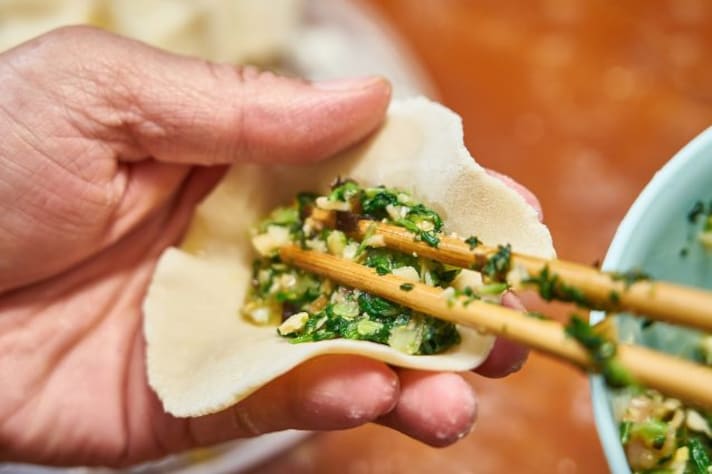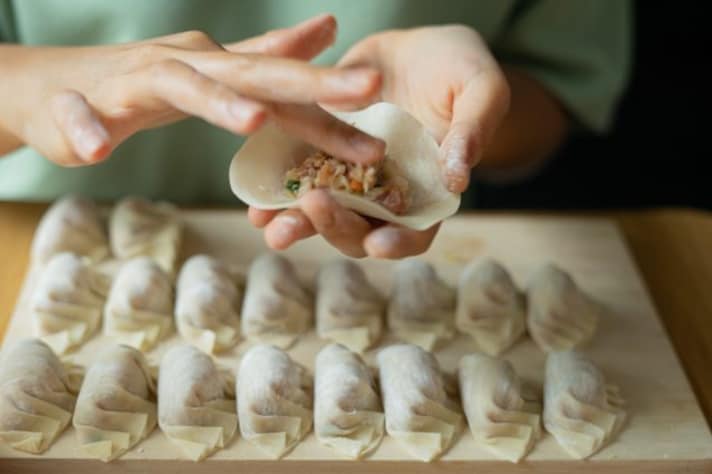Here’s Why You Should Never Overwork Your Dumpling’s Filling
Overworking dumpling filling can make it tough and rubbery by over-activating proteins or turning veggie fillings into mush, making your dumplings unpleasant to eat and even hard to form and close. To avoid this, mix just enough to combine ingredients without overdoing it.

Making dumplings is a joy—there’s something incredibly satisfying about wrapping up a flavorful filling in a delicate dough, folding each one like a little gift. But while the dough gets a lot of attention, the filling can make or break your dumpling experience. One of the biggest mistakes? Overworking the filling. While it’s tempting to keep mixing for that perfect texture, too much handling can lead to a rubbery, dense filling that no one wants. So, how do you avoid this common pitfall and achieve the perfect balance?
Why Overworking the Filling Is a Recipe for Disaster
The goal of a dumpling filling is tenderness and flavor, but overworking it can ruin both. When you over mix a meat-based filling, for example, you activate the proteins too much, leading to a tough, chewy texture rather than the light, delicate bite you’re aiming for. Think of it like kneading bread dough—the more you mix, the stronger the gluten becomes. That’s great for bread, but in dumplings, we want the opposite effect. Over mixing can also cause the filling to release too much moisture, making it harder to wrap and leading to soggy dumplings.

Vegetarian fillings aren't safe from this mistake either. Overworking vegetable or tofu fillings can break down the ingredients too much, causing them to lose their texture and bite. Instead of flavorful, distinguishable chunks, you end up with a mushy, unappetizing mix. So, less is definitely more when it comes to mixing that filling.
Signs You've Overworked the Filling
So, how do you know if you’ve crossed the line from well-mixed to overworked? The first red flag is texture. A well-mixed filling should be cohesive but still tender. If it starts feeling too dense, sticky, or rubbery, you’ve likely gone too far. For meat-based fillings, overworked protein will have a springy, almost bouncy texture before you even cook it—if your filling feels more like a meatball than a dumpling, it’s a sign to stop.
Moisture is another clue. If you notice that the filling is leaking liquid as you mix, that’s a sign that you’ve overworked it, causing the ingredients to release their natural juices. This will result in a filling that’s difficult to handle and might even break through the dumpling wrappers.
How Much Should You Work the Filling?
The key to perfect dumpling filling is a light touch. For meat fillings, mix just enough to combine the ingredients evenly, but stop once everything is distributed. You want the mixture to hold together, but still have a tender, soft feel. A good rule of thumb is to use a folding motion rather than a vigorous stirring one—this helps keep the proteins from overdeveloping while ensuring everything is well mixed.

For vegetable fillings, you want to keep the pieces intact as much as possible. Gently fold the ingredients together, stopping as soon as everything looks well distributed. This will keep the filling flavorful and texturally interesting, rather than a mushy mess.
In either case, you’re aiming for balance. Mix enough to create a harmonious blend of flavors, but resist the urge to overdo it. When in doubt, less is more. If the filling feels light and holds its shape without being overly firm, you’ve hit the sweet spot.
;Resize,width=767;)
;Resize,width=712;)
;Resize,width=712;)
;Resize,width=712;)
